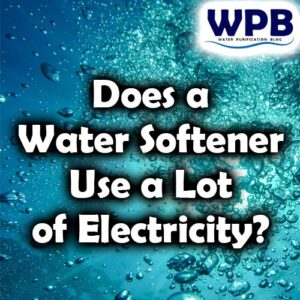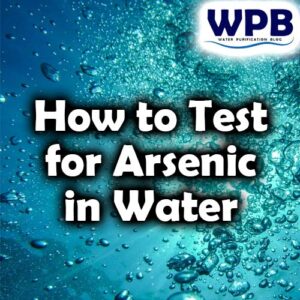Maintaining the purity and safety of your well water is of a very big importance.
In this article, we will present you with a simple, safe, and highly effective chlorine based method to disinfect your well water, allowing you to eliminate bacteria and other contaminants by periodically executing a well sanitation.
By implementing these techniques, you can ensure the well-being of your family and enjoy microbiologically safe water for everyday use.
Table of Contents
Understanding the Vulnerability of Well Water
Before getting into the sanitation process, it is essential to understand why well water is more susceptible to microbial contamination compared to city water.
Unlike municipal water supplies that undergo rigorous treatment processes, well water is sourced directly from underground wells.
As a result, it may come into contact with various contaminants, including bacteria, viruses, and other impurities.
Also, municipal water also has an oxidizing chemical like chlorine or chlorine dioxide dosed before it is ready to use.

If your water filter has slimy deposits like on the picture above, your water is almost sure microbiologically contaminated.
The Risks of Microbiological Contamination
Microbiological contaminants in well water pose a significant risk to human health.
They can lead to waterborne illnesses such as diarrhea, vomiting, and stomach cramps.
Coliform bacteria, a common type of microbial contaminant found in wells, can serve as an indicator of potential fecal contamination and the presence of other harmful pathogens.
How to make well sanitation Effectively
To ensure the safety of your well water, you should implement a periodical chlorine based disinfection method.
Chlorine is a powerful disinfectant widely used in water treatment processes due to its effectiveness in eliminating bacteria, viruses, and other harmful microorganisms.
Also, it is the cheapest way to carry out well sanitation.
Step 1: Preparing for Disinfection
Before you begin the well sanitation process, it is crucial to gather the necessary materials and take the appropriate precautions.
- Materials Required:
- Chlorine bleach (sodium hypochlorite solution)
- Rubber gloves
- Protective eyewear
- Measuring container
- Mixing container
- Precautionary Measures:
- Ensure proper ventilation during the disinfection process.
- Avoid direct contact with chlorine bleach as it can cause skin and eye irritation.
- Adhere to the recommended dosage and handling instructions provided by the manufacturer.
Step 2: Determining the Required Chlorine Dosage
To calculate the appropriate amount of chlorine required to disinfect your well water, consider the following factors:
- Well Depth and Water Volume: The depth of your well and the total volume of water it holds will determine the dosage of chlorine needed. You can find this information in your well’s construction records or consult a professional well driller for assistance.
- Chlorine Concentration: The concentration of chlorine bleach varies between different brands and products. Ensure you have the accurate percentage of sodium hypochlorite available, typically ranging from 5% to 8.25%.
Step 3: Initiating the Disinfection Process
Once you have determined the appropriate dosage of chlorine, you can proceed with disinfecting your well water.
- Protective Measures:
- Wear rubber gloves and protective eyewear throughout the process to avoid direct contact with the chlorine solution.
- Chlorine Mixing Process:
- Measure the required amount of chlorine bleach based on your well’s depth and water volume.
- Add the chlorine bleach to a mixing container filled with water. Stir the mixture thoroughly to ensure proper distribution.
- Introduction of Chlorine Solution:
- Carefully pour the chlorine solution into your well. Use caution to prevent splashing or spillage.
- Circulation and Mixing:
- Turn on all faucets and outlets connected to your well system, including indoor and outdoor fixtures.
- Allow the chlorinated water to flow through the entire system until a distinct chlorine odor is noticeable at each outlet.
- To facilitate thorough mixing, it is recommended to run water for at least 30 minutes.
- Contact Time:
- After the circulation and mixing process, let the chlorine solution remain in your well and plumbing system for a minimum of 1 to 2 hours. This extended contact time will ensure effective disinfection.
- Flushing and Testing:
- Once the contact time has passed, flush your plumbing system thoroughly to remove any residual chlorine.
- Collect a water sample and have it tested by a certified laboratory to ensure that the disinfection process was successful and your well water is safe for consumption.
By following these steps, you can effectively disinfect your well water and eliminate harmful, dangerous bacteria and other contaminants. Regular maintenance and periodic disinfection are crucial to safeguard the quality and safety of your water supply.
Remember, the health and well-being of your family greatly depend on the quality of the water consumed.
Implementing proper disinfection methods will provide peace of mind, ensuring that your well water remains pure, safe, and free from microbial contamination.

Who am I?
I am working as a water treatment technical manager and I have more than 25 years of practical experience in water purification.
Water purification expert
After many years of experience in water purification, I want to share some of my knowledge and get people to know the real importance of water quality.
Water purification and water treatment are very complex themes, so it is important to explain them in an easy-to-read way.
On this blog, you will find many understandable, easy-to-read information about water purification.
I hope you enjoy it, find some useful information, and thank You for reading.
More info on my work and my expertise on water purification can be found on my LinkedIn profile.






